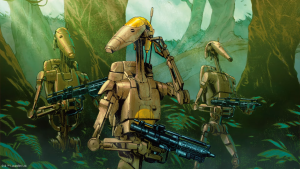
Trending Today

On the surface, building a strike team in Shatterpoint is pretty straightforward. You only need to choose 6 units and don’t have to worry about upgrades. When you think about it though, those 6 units need to do a lot of different things. As such, I’ve gone ahead and compiled a list of different roles that units can fill within a strike team. I’m also putting a recommendation on how many units I like for each role. The list is by no means comprehensive or a set of strict guidelines. It’s a summary of what I’ve found to generally work best, but many lists can work outside of the proposed structure. A lot of these thoughts stem from my thinking about objective swing and how to build enough reliable swing into a list. You can read more about “Swing Theory” here and here.
It’s important to keep in mind that one unit can fill multiple roles. In fact, if a unit only fills a single role, I’d say they need to be exceptionally good at it to justify inclusion in a team. The last caveat I have is that I’m considering regular strike team building only. Building premiere format lists of four squads is something I’ll probably look at in the medium-term future, but certainly not today.
Without further ado, let’s get into my definitely-definitive-with-no-room-for-disagreement categories!
Usually the best characters to get a one-shot are primaries. I’ve previously done some simulations comparing the big hitters in a variety of situations, and coming out of that the standout examples I’d give for this category are Darth Vader, General Obi-Wan, Grievous, and Anakin. Maul was on the fringes, and Mace was not included in the article at the time. I think it’s safe to assume Mace can fall into this category as well.
Even though wounding can be an effective route to victory, it is only one of many and can be a bit too reliant on dice. As such, I generally wouldn’t looking to fill both primary slots with big damage dealers unless they fill other important roles as well. Of course, I also don’t want to be unable to damage stuff!
Recommended Target Quantity: 1
Getting to the right objective at the right time can be critical in a game of Shatterpoint, especially in the last two struggles when one is double points and things can swing quickly. Or sometimes there’s an out of the way objective that one player thinks is safe, and if you can get there for a surprise capture it can be relatively secure. Mobility is important in both scenarios.
The first examples that come to mind are units with multiple move abilities available in their activation. Both Asajj and Padawan Ahsoka can jump twice with their active abilities, although once they are injured that gets very expensive. Rex can use Get a Move On, Soldier on himself plus Defensive Maneuver and a move action. No jump does limit the vertical options a little, but that’s what climbing is for! If all those moves aren’t enough, Rex has a range 5 gun and two shoves to start his combat tree, meaning he can push an enemy away and pull himself closer to his target. Jango Fett is the final all-star I’ll mention since he can Jetpack, move action, then focus for another jump.
The necessity of a mobility master varies depending on the list. If you have a bunch of B+ movers, you don’t need an A+ mover as much since you can probably get where you need to if you have decent board presence. If you have a bunch of C-level movers though, I’d be sure to include a unit that can really hustle and relocate quickly.
Recommended Target Quantity: 1
Moving around units when it’s not their activation is a common and important ability. It can get characters into position to contest objectives, get them to safety, get them in range to use an ability, or get them up the battlefield quickly before they activate.
Out-of-activation movement can take a few forms. The most common method would be the active character using a tactical or active ability to move an ally. I won’t really provide examples here because there are so many. Each “faction” has access to these, but Separatist units especially lean into it.
Another common form of out-of-activation movement involves a character triggering a reactive or identity ability to get a move. Examples would be Barriss Offee with Slip Away, Savage Opress with Unwitting Brute, or MagnaGuards with Protection Protocols. Such abilities vary in how proactively you can trigger them. The examples listed above are all mostly within your control, whereas something like Dooku’s Brave, But Foolish depends on your opponent doing something, making it less reliable.
Finally, the last type of out-of-activation movement we’ll discuss is post-attack movement. Usually this would be from a move in a unit’s defensive expertise, such as primary Ahsoka, or from another ability like Obi-Wan’s Knowledge and Defense. These abilities are very good for annoying your opponent and mitigating swing, but triggering them is in the hands of your opponent and, sometimes, the dice.
Shatterpoint is a game where positioning and movement is very important. Therefore, the more moves you can get the better. But there are couple things to be weary of before spamming too many out-of-activation moves. If you’re trying to contest an objective, you need unwounded bodies around to move. Tanky units like primary Ahsoka, Savage, and MagnaGuards are great because they can not only move, but are often alive to make a difference when they do. I’ve also found that there can be diminishing returns to extra moves. Eventually everyone is going to be where you want them, so having a billion free moves is a bit much. It’s rare, but possible to go overboard.

Recommended Target Quantity: 3-4
This one is simple: wounding units can be dicey, literally. You’re often at the mercy of the dice to get the requisite successes to apply enough damage. Shoving enemies, however, can be easy. In many cases one shove is enough to get characters off of objectives, and two will always be enough if there’s space (and no Steadfast). Anyone who has read my unit guides has probably noticed that I value early-combat-tree-shoves very highly. If all you need is one or two successes past defense to get a shove through then you’re giving yourself some protection against dice variance.
Rex, Clan Kryze Commandos, and MagnaGaurds are all examples of units with good attack pools and two shoves in as many tree positions. I’d say it’s good to have at least one standout shover, then many characters where at least one shove is fairly reliable.
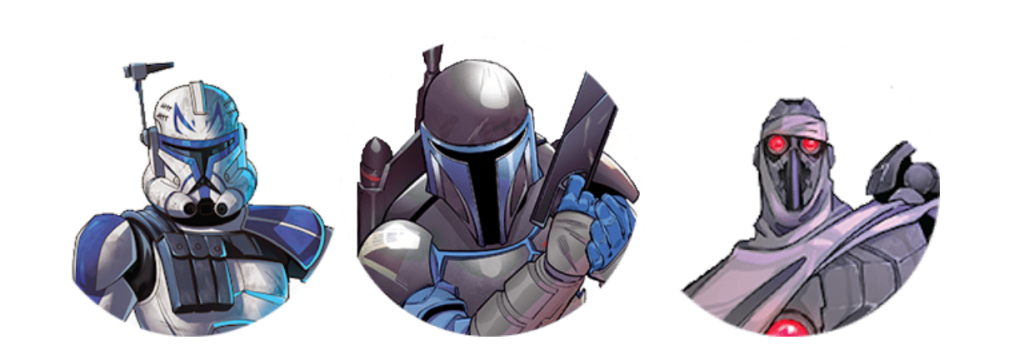
Recommended Target Quantity: 4-5
Sometimes even easy shoves aren’t enough. Maybe the defender is extremely hard to hit. Maybe they have a move in their expertise to get back on the objective, or maybe it’s Out of Hiding Obi-Wan and he’s going to Mind Trick you. The more I’ve played Shatterpoint, the more I’m convinced that a unit with a guaranteed push or pull, such as Barriss with Force Push, Jango with Capture Wire, or Talzin with Manipulating Hand, is almost essential. I won’t pretend I have those units in 100% of my lists, but they are in the majority. Having a diceless solution to move enemies can make so many headaches go away. As a downside, these abilities can get expensive so you need to make sure your force budget can accommodate their use.

Recommended Target Quantity: 1-2
I was initially underwhelmed with healing abilities in Shatterpoint. If I have some 501st clones on 6 damage then heal them down to 4 damage they are probably still getting wounded on the next attack. It can also be tough to get healing where you need it when you need it, since the window to heal a character can be small. Over time though, I’ve gotten more of an appreciation for healing and how it functions in the game.
When I’m talking about the “healer” role, I don’t mean you need someone like Luminara around to do Full Recovery on people. Instead, I’m looking for characters you can do 2-3 heals and can do it where you need it. Examples include Bo-Katan with Mandalore Will Survive, Out of Hiding Obi-Wan with Run and his attack, or Luminara with Flow of the Force. Small healing pools can be huge for taking conditions off allies. A well placed pin or strain can ruin your day, but it only takes one heal to make that problem go away. For healing damage, taking our example 501st unit from 2 damage down to no damage can make it much more likely they’ll survive the next attack.
A successful Shatterpoint list doesn’t need huge amounts of healing in my experience, but it needs a little bit of healing that can be in the right spot at the right time.
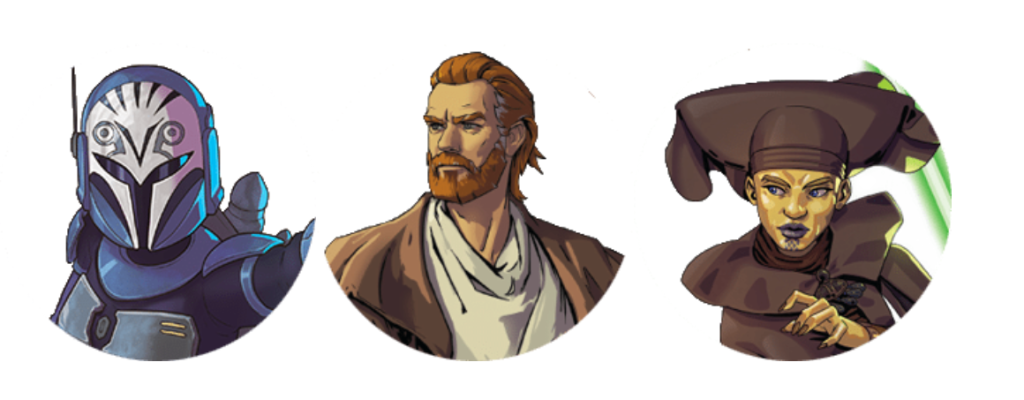
Recommended Target Quantity: 2
I’ll keep this brief: have I ever looked at a list and thought “I need to put a unit in there to apply more conditions to my enemies”? No. No I have not. Conditions are great and keywords Enfeeble and Coordinated Fire are great and can bring a lot of value, but I don’t think it’s a role that has to be filled in a successful list.
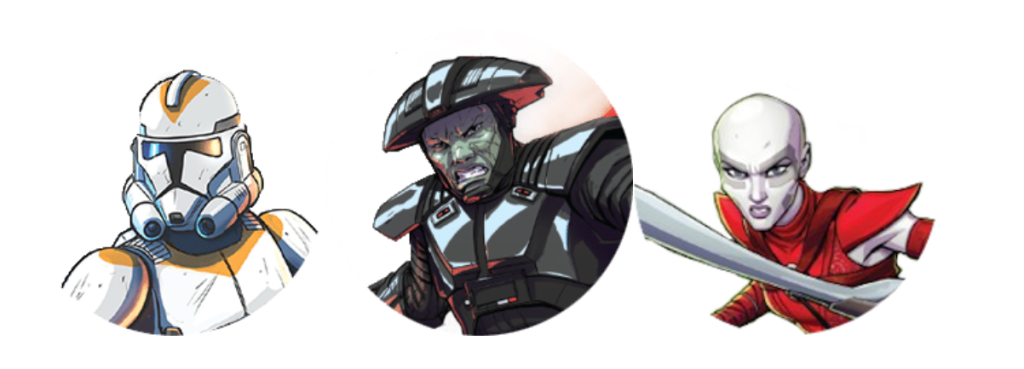
Recommended Target Quantity: 0
Similar to the Condition Applier, I wouldn’t be putting units into my strike teams for the primary purpose of refreshing force. Getting more force is great, but it can often be inconsistent. Take it when you can get it, but don’t build around it would be my advice. The one exception may be Mace Windu since his force refresh can be guaranteed. However, to get that refresh you do need to dedicate your Shatterpoint activation to him and keep him in his Jedi Master stance, which are limitations.

Recommended Target Quantity: 0
Pulling the Shatterpoint card and doing a big flashy play is fun. It can be an opportunity to use splashy abilities like Force Push or I’m Going to End This more than once per deck rotation. However, those abilities are expensive and using them multiple times can often put too much strain on your force supply. On the other hand, nothing feels worse than a lacklustre Shatterpoint turn, so what do we do? Enter the low-force Shatterpoint target. This is someone who can have a big, impactful turn with minimal force.
My absolute favourite in this category is Lord Maul. Since he can take damage instead of using force he can often use all his abilities with zero force cost. I had a Maul activation in a recent game where I started the turn down 0-2 on objectives and ended up 3-0. Total force cost: none. Rex is another favourite of mine. He can use Get a Move On, Soldier on himself for a move and a hunker, then heal once with that hunker thanks to Bring It On, Clankers, then take move and make a strong shoving attack from range 5. A General Grievous activation can move many bodies around and include two attacks (one from Grievous and one from a friend) all for zero force cost.
Force is a valuable commodity in Shatterpoint. I believe it is essential to be able to make high-impact plays without demanding too much force.
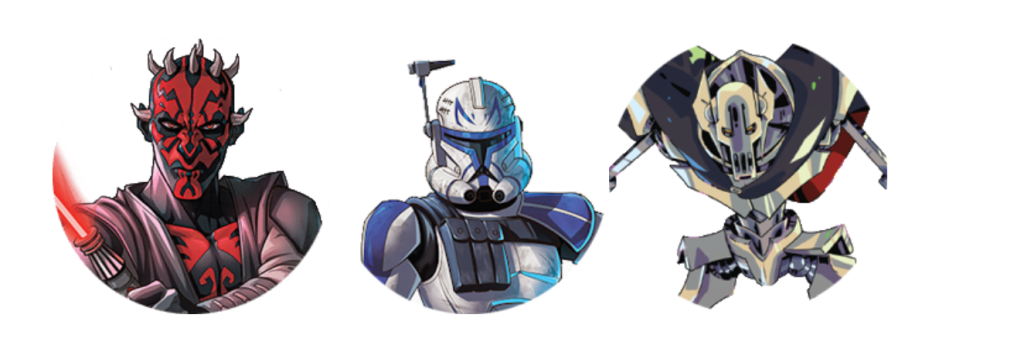
Recommended Target Quantity: 1
This is the most wishy-washy of the categories. Really it’s just a catch-all for spicy abilities. Not only does having a character with something unique make a list funner to play, it also gives your opponent something extra they have to consider. Examples for me would be Out of Hiding Obi-Wan with Mind Trick, Jango with Not So Fast, or even Luminara’s Flow of the Force (specifically the part where you look at the top card before choosing to draw or use the reserve).
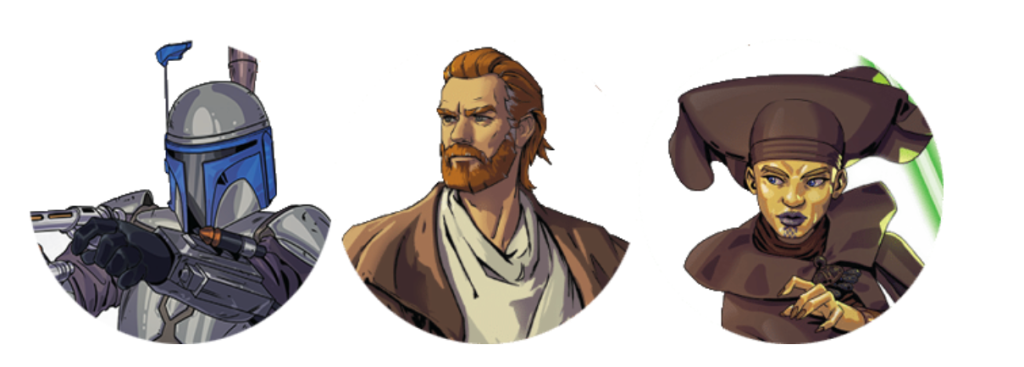
Recommended Target Quantity: 1
Golly gee, would you look at the time! It really does fly when you’re having fun. At one point I had thought about walking through some example lists, but alas that would make for a loooong article. Fear not! I’ve put up another 2000 words over on the Patreon detailing three lists I’ve been messing around with this month. Let’s see if I take my own advice! If y’all like it perhaps we can make it a monthly thing. If you would like some other type of content let us know. We want to make it worthwhile for our Shatterpoint readers.
Remember, this list of roles is not exhaustive and the recommended quantities are not hard and fast. Characters can fill multiple roles or multiple characters can combine to fill one role. I’ve built and had success with lists that don’t exactly follow these guidelines. However, I do find it’s a useful starting point to evaluate your strike team and recognizing it’s strengths and weaknesses.
Happy strike team building!


Copyright © 2024 The Fifth Trooper. All Rights Reserved.